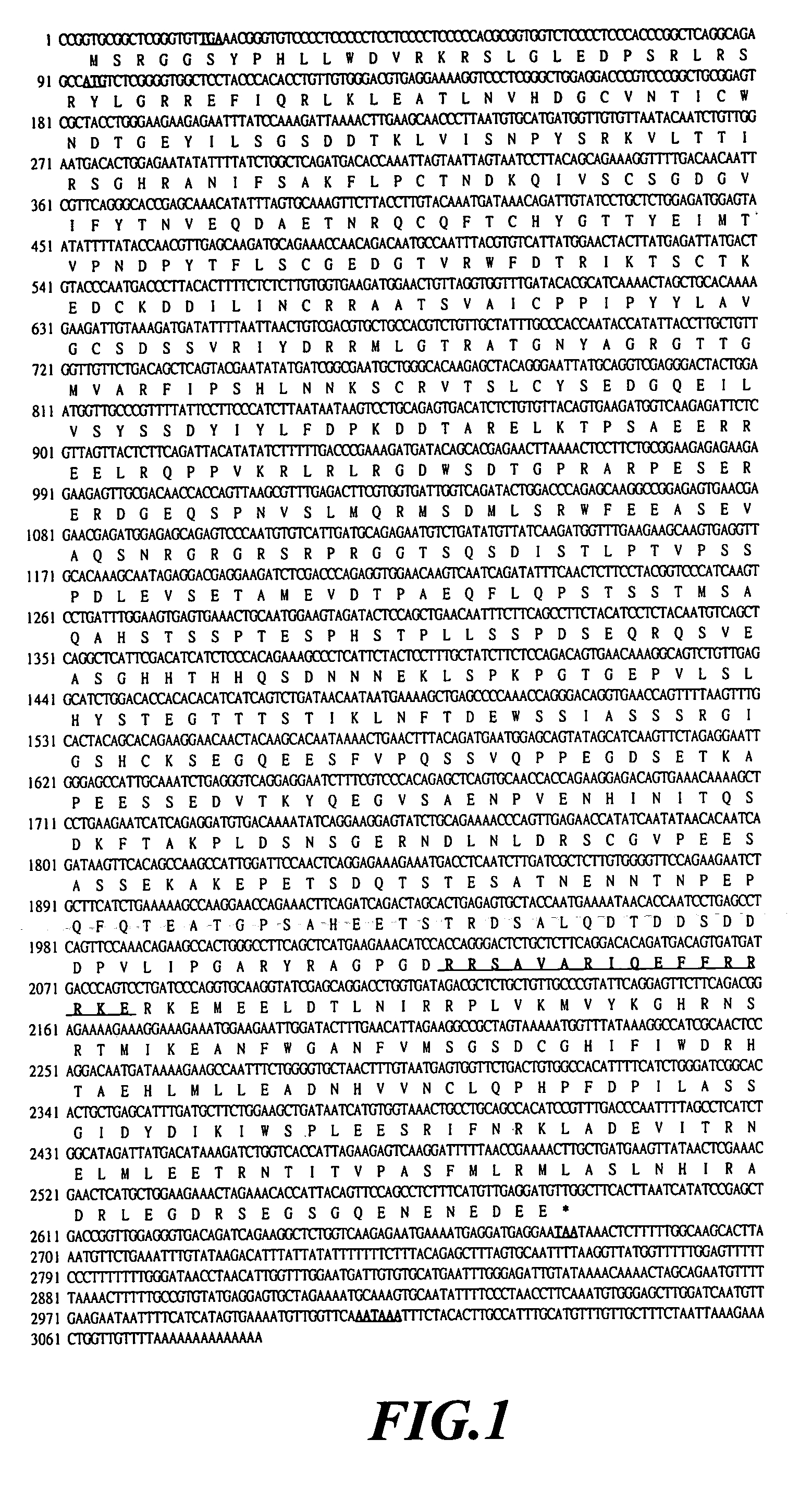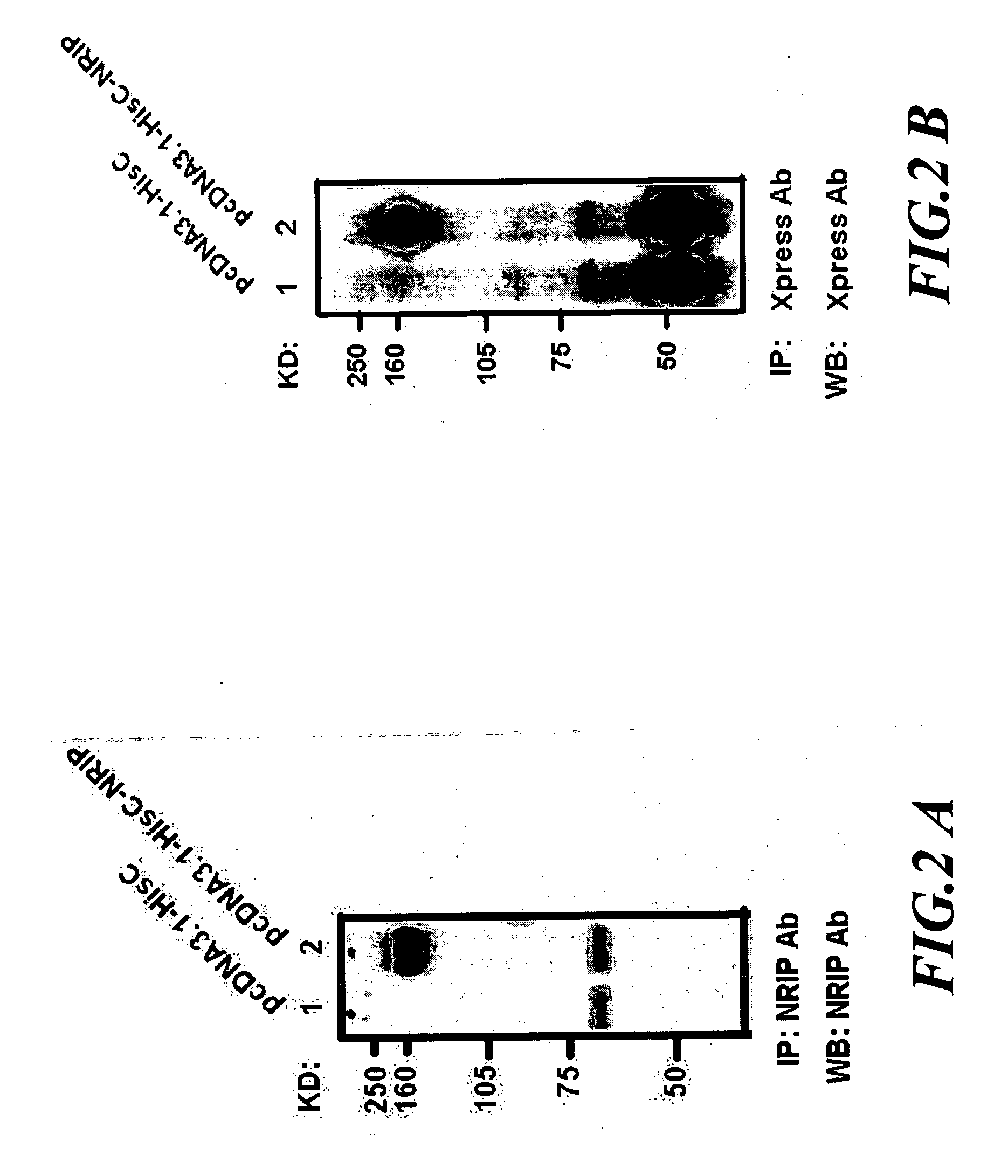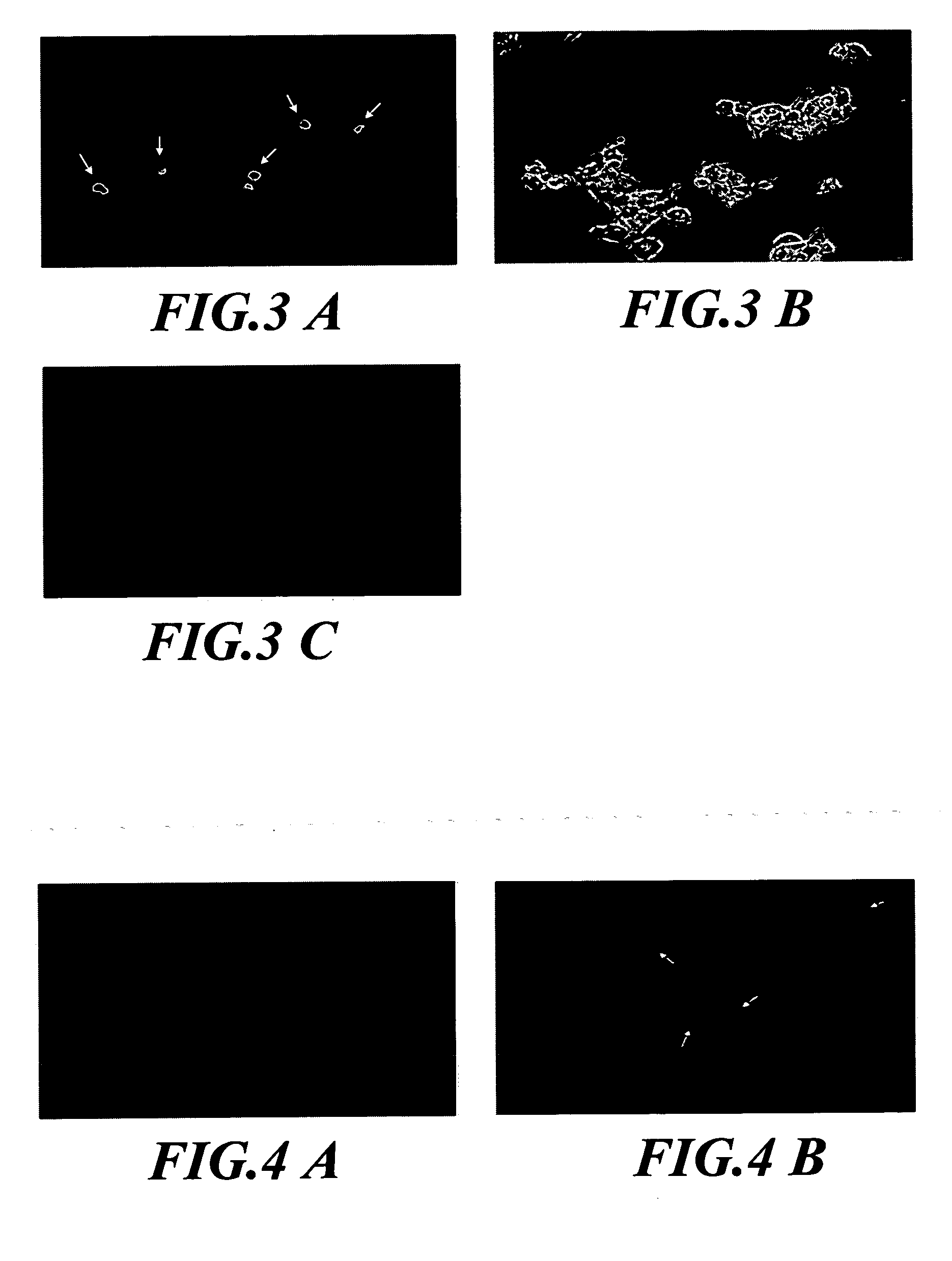Novel diagnosis & treatment tools for cancer using the NRIP antibody and RNA interference
a technology of nrip antibody and rna interference, applied in the field of cancer, can solve the problems of insufficient factors for cancer induction, virus infection and viral gene expression, and inability to detect and treat cancer,
- Summary
- Abstract
- Description
- Claims
- Application Information
AI Technical Summary
Benefits of technology
Problems solved by technology
Method used
Image
Examples
example 1
Materials and Methods
[0023] Yeast Two-Hybrid Screen. A pACT2-HeLa MATCHMAKER cDNA library (Clontec) that consists of the GAL4 activation domain (aa 768-881) (SEQ ID No: 41) fused with a human HeLa cDNA library was transformed into CG-1945 yeast strain (Clontec), along with a plasmid pAS2-1-AR595-918 containing GAL4 DBD (aa 1-147) (SEQ ID No: 42) fused with the C-terminal domain of androgen receptor (AR, amino acids 595-918) (SEQ ID No: 1). Approximately 5×106 yeast transformants were screened and selected on synthetic dropout (SD, Difico) medium lacking leucine, tryptophan and histidine in the presence of 25 mM 3-amino-1,2,4-triazole (3-AT, Sigma) and 10 nM dihydrotestosterone (DHT, Sigma). Colonies were tested for LacZ reporter gene activity in a β-Gal filter assay. Plasmid DNAs from positive clones were recovered from yeast, amplified in Escherichia coli, and confirmed by sequencing.
[0024] 5′-RACE-PCR. 5′-RACE-PCR was used to obtain the remaining 5′ end sequence of the above iso...
example 2
Generation and Analysis of NRIP antibody
[0035] The antibody generation protocol begins with the synthesis of antigenic peptides based on non-overlapping regions of the target protein. The NRIP antigenic peptides are determined using the method of Kolaskar and Tongaonkar (Kolaskar et al., FEBS Lett., 1990, 276, 172-174). Predictions are based on analysis of data from experimentally determined antigenic sites on proteins has revealed that the hydrophobic residues Cys, Leu and Val, if they occur on the surface of a protein, are more likely to be a part of antigenic sites. Peptides are selected to be as unique as possible to the target protein and to have minimal homology to closest homologues and to other proteins in the human genome. According to the principle, location of the potential antigenic peptides of the NRIP protein has been predicted and comprised with 29 antigenic determinants (Table 1).
TABLE 1Antigenic Determinants in NRIP SequenceStartEndPosi-Posi-NametionSequencetionN...
example 3
The Locations of NRIP in Mammalian Cells
[0038] The NRIP gene was originally isolated from the HeLa cDNA library by yeast-two hybrid screening. Sequence analysis of domain architectures in human NRIP are shown that contains seven WD40 domains and one nuclear translocation sequence (NLS). NLS sequence suggested that NRIP may be a nuclear protein. WD40 repeats are conserved sequence motifs of 40 residues with a GH dipeptide 11-24 residues from its N-terminus and the WD dipeptide at its C-terminus and probable contribute to protein-protein interactions (Neer et al., Nature, 1994, 371, 297-300; and Smith et al., Trends Biochem. Sci., 1999, 24, 181-185). WD40 repeats-containing NRIP may play the role for protein-protein interactions.
[0039] To clarify the location of NRIP in mammalian cells, immunofluorescence assay was conducted. 293T cells were transiently transfected with pEGFP-NRIP plasmid. Forty-eight hours after transfection, cells were fixed with 4% paraformaldehyde and stained wi...
PUM
| Property | Measurement | Unit |
|---|---|---|
| apparent molecular mass | aaaaa | aaaaa |
| v/v | aaaaa | aaaaa |
| luminescent | aaaaa | aaaaa |
Abstract
Description
Claims
Application Information
 Login to View More
Login to View More - R&D
- Intellectual Property
- Life Sciences
- Materials
- Tech Scout
- Unparalleled Data Quality
- Higher Quality Content
- 60% Fewer Hallucinations
Browse by: Latest US Patents, China's latest patents, Technical Efficacy Thesaurus, Application Domain, Technology Topic, Popular Technical Reports.
© 2025 PatSnap. All rights reserved.Legal|Privacy policy|Modern Slavery Act Transparency Statement|Sitemap|About US| Contact US: help@patsnap.com



